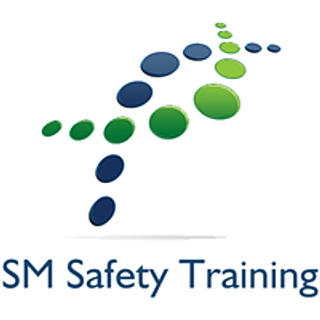What Is PAT Testing? 5 FAQS About Portable Appliance Testing
- steven mullan
- Feb 6, 2024
- 4 min read
Updated: Sep 15, 2024
Written by Steve Mullan

What Is PAT Testing? 5 FAQS About Portable Appliance Testing
Whether you’re a small business owner or managing a large corporation, you need to know about PAT testing. Portable appliance testing helps to ensure your electrical equipment is safe to use.
PAT testing is the process of testing electrical appliances and equipment to ensure they are in working order and safe to use. It usually involves checking for signs of wear and tear, damage or other indicators that could suggest the electrical appliance or machine could pose a health and safety risk to people.
PAT testing is an important part of any business or organisation’s health and safety regime and helps to minimise the risk of accidents or injuries occurring as a result of faulty electrical equipment. However, there are many myths and misconceptions about PAT tests, such as whether or not they’re a legal requirement or whether you need an actual electrician — or some other professional — to conduct a PAT test.
In this guide, we go over some facts about PAT testing as well as official guidance from the UK Health and Safety Executive (HSE). But first, let’s start with the basic question: what exactly is PAT testing and how does it work?
1. What Is Portable Appliance Testing Testing?
Portable appliance testing, or PAT testing, is a process of electrical safety testing conducted on portable electrical appliances and equipment. In the context of health and safety (H&S) compliance, PAT testing ensures equipment and appliances workers use are safe. It also plays an essential role in keeping workplaces safe from threats such as fires, electrical shocks and more. For instance, reporting defects, such as frayed cables and scorched or hot plugs, is part of preventing fires caused by electrical equipment.
Related Reading: Introducing Fire Safety Training to your Employees
PAT testing typically includes three basic steps:
Regular informal checks of electrical appliances and equipment
Formal visual inspections of electrical appliances and equipment
Manual inspection of the appliance or equipment using a handheld device called a PAT tester. This is connected to the appliance or equipment being tested and is used to check for signs of damage or wear.
PAT tests can also include insulation resistance tests, earth continuity tests, and polarity checks. PAT testing, however, is not a substitute for regular maintenance and inspection of electrical equipment — but it is an important part of conducting an electrical risk assessment, which is a critical step to keep your workers away from harm.
2. What Needs PAT Testing?
While there is no legal definition for “portable appliance,” HSE’s guidance, Maintaining portable electric equipment in low-risk environments, states a portable or movable electric appliance is “any item that can be moved, either connected or disconnected from an electrical supply.”
Generally speaking, portable electrical items have a lead (cable) and a plug.
HSE lists the following examples of portable and movable electric equipment:
Small movable electrical equipment: These include small items such as kettles, floor polishers, vacuum cleaners, portable heaters, fans, desk lamps, televisions, radios, and projectors. This category also includes small household electric items such as irons, hair dryers, toasters, food mixers and more.
Larger portable items: These refer to large electrical appliances that are rarely moved, such as fridges, vending machines, washing machines, electric cookers, desktop computers, water chillers, microwave ovens, photocopy machines and more.
Battery-charging equipment: These include devices that have to be plugged into the mains to charge mobile phones and battery-powered devices.
Extension leads: These include extension cords, connection leads and multi-way adaptors.
Portable items wired into the mains: These refer to portable and movable electrical items that have been wired (i.e. fixed) to the mains electricity supply, such as handheld hairdryers and towel racks.
3. Is PAT Testing A Legal Requirement?
No. There is no specific law that identifies PAT testing as a legal requirement or obligation.
According to the guidance from HSE, the Electricity at Work Regulations 1989 requires employers to ensure any electrical equipment that could cause injury is maintained in a safe condition. However, the Regulations do not mention PAT testing or any other specific method of maintenance. Ultimately, employers have the discretion to:
Determine what needs to be done to maintain electrical equipment
Identify the person/s responsible for maintenance
Set a schedule for maintaining electrical equipment
As an employer, your role is to ensure your compliance with the regulations. These include — but are not limited to — the following:
PAT testing is just one of many ways to demonstrate compliance with these laws.
Related Reading: What Is A Dynamic Risk Assessment
4. Does PAT Testing Require An Electrician?
No. HSE guidelines state that the person doing PAT testing only needs to be “competent” to do it. In low-risk environments (e.g. ordinary offices), a competent staff member with enough knowledge and training can conduct visual inspections of electrical equipment. For instance, that person should ideally know what a correctly wired plug looks like

However, more knowledge and experience are needed to do inspection and testing. The person responsible for PAT testing will need:
The proper equipment to do the tests
The ability to use PAT testing equipment
The ability to properly understand and interpret the test results.
We encourage employers to take a risk-based approach to PAT testing. If the scope of inspection and testing proves beyond the knowledge of your in-house staff, it’s a good idea to consult a professional.
5. How Often Should PAT Testing Be Conducted?
When determining how often to inspect and test portable electrical equipment, HSE recommends employers consider two factors:
The type of electrical equipment in question
The environment it’s used in.
For example, power tools used in machine shops should be examined more frequently than a rarely used printer in the office. You can find more insights on frequencies of inspection and testing by reading HSE’s guide to maintaining portable and transportable electrical equipment.
If you need health and safety advice, do not hesitate to contact us at info@smsafetytraining.com. Or visit us at www.smsafetytraining.com





Comments